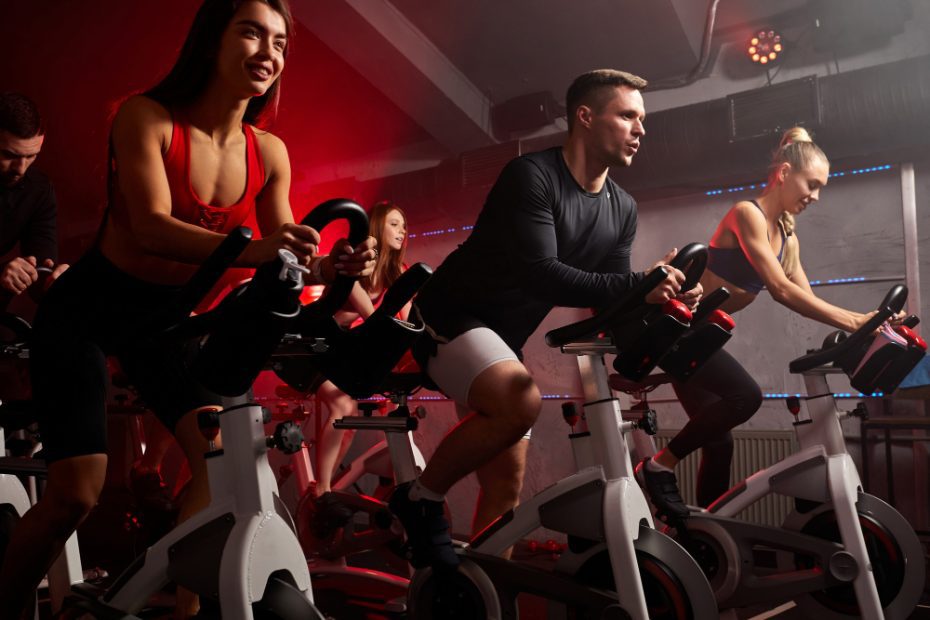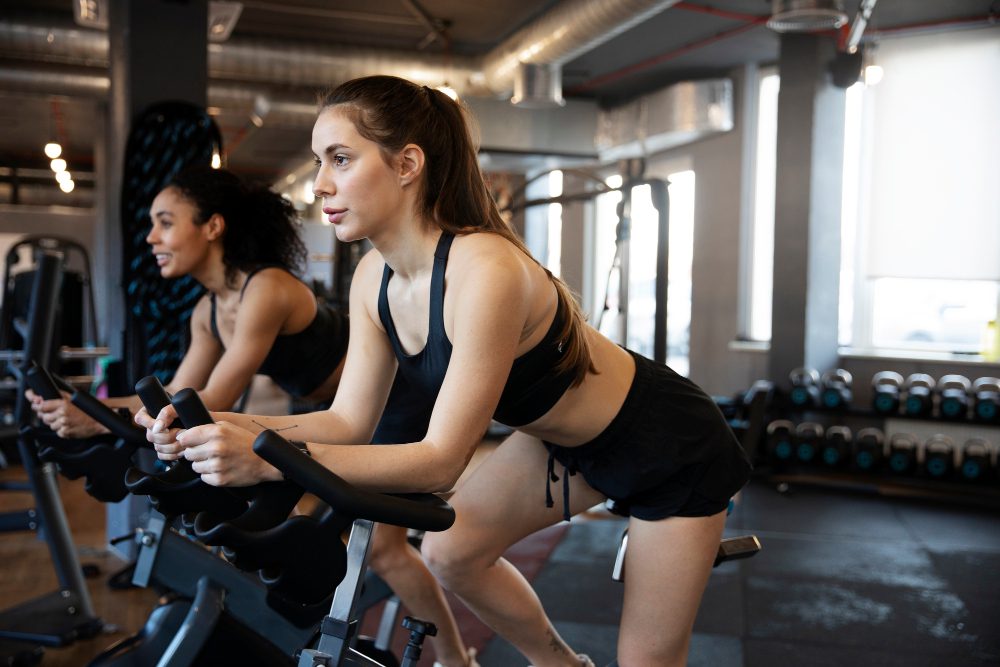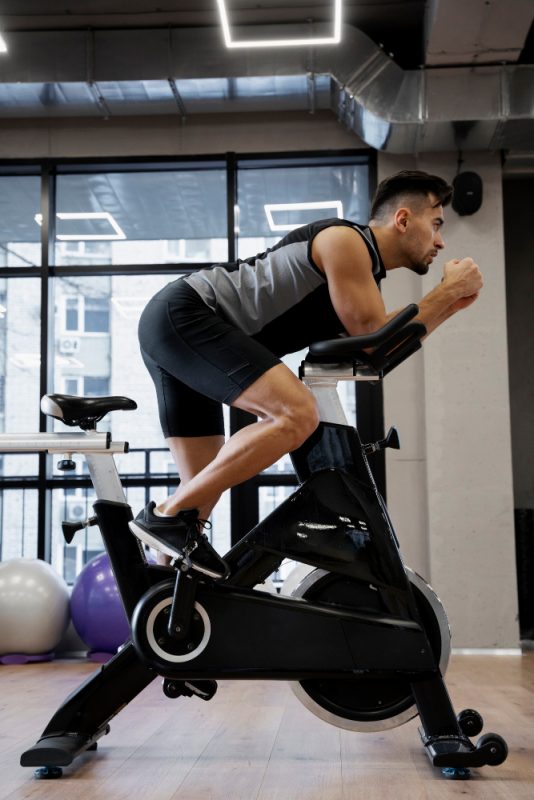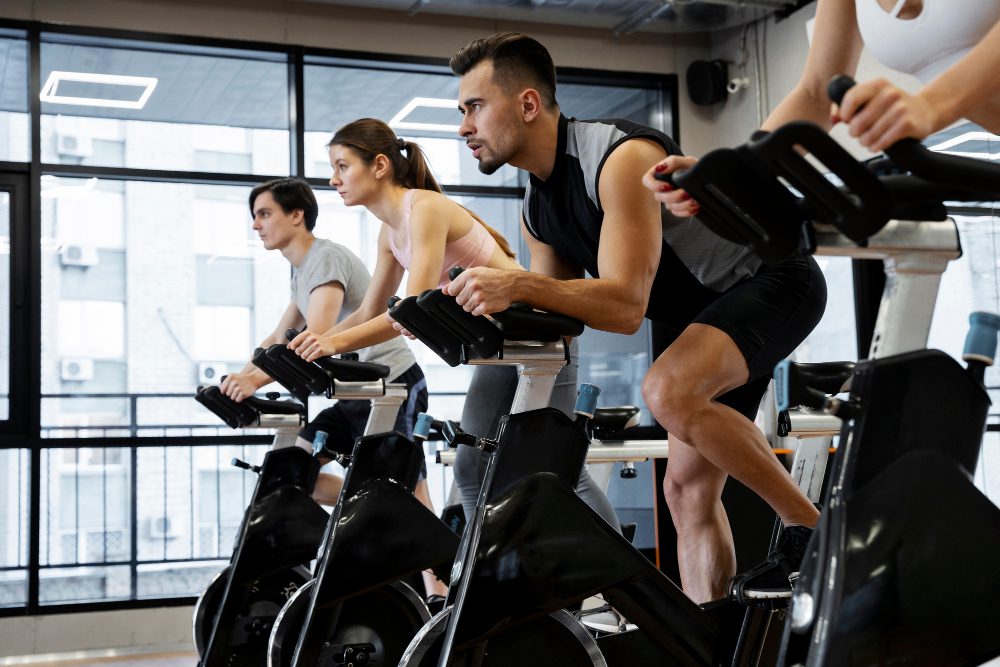Why is spinning so addictive?
Spinning, the high-energy cycling workout, has gained immense popularity in recent years. People of all ages and fitness levels are drawn to its addictive nature, making it a favorite among gym-goers and fitness enthusiasts. But what exactly makes spinning so captivating and why do people keep coming back for more?
Physical and Mental Benefits
One of the main reasons why spinning is so addictive is the numerous physical and mental benefits it offers. The intense cardio workout helps increase endurance, burn calories, and improve cardiovascular health. As you pedal your way through a spin class, your body releases endorphins, which are often referred to as “feel-good” hormones. These endorphins help reduce stress, boost mood, and provide a sense of euphoria, leaving you feeling energized and exhilarated.
The Group Dynamic
Another aspect that adds to the addictiveness of spinning is the group dynamic. Spin classes are typically held in a studio setting with an energetic instructor leading the session. Exercising in a group setting creates a sense of camaraderie and motivation, as everyone works towards a common goal. The music, lighting, and enthusiastic atmosphere further enhance the experience, making it an enjoyable and engaging workout.
Variety and Personalization
Spinning also offers a wide range of options and the ability to personalize your workout. Whether you prefer high-intensity interval training (HIIT), endurance rides, or climbs, there is a spin class that caters to your preferences. Instructors often incorporate different routines, music genres, and challenges to keep the workouts interesting and engaging. This variety not only prevents boredom but also allows individuals to continually push their limits and achieve new fitness goals.
Tracking Progress
Many spin studios use technology to track and display performance metrics during classes. This includes metrics such as cadence (pedaling speed), resistance level, and power output. These real-time statistics provide participants with a sense of accomplishment and allow them to track their progress over time. With the ability to measure and improve performance, individuals feel motivated and driven to keep attending spin classes.
The Rush of Achievement
Spinning is a highly demanding workout that pushes both physical and mental limits. When you successfully complete a challenging uphill climb or maintain a high-intensity pace throughout a class, a sense of pride and achievement washes over you. This rush of accomplishment fuels the addiction to spinning, as individuals strive to surpass their previous limits and conquer new challenges.
In summary, spinning’s addictiveness can be attributed to its physical and mental benefits, the group dynamic, the variety and personalization it offers, the ability to track progress, and the rush of achievement experienced during and after each class. Whether you are looking to improve your fitness, destress, or simply have fun, spinning provides an addictive and fulfilling workout experience that keeps people coming back for more.
“Spinning gives me an incredible sense of accomplishment and makes me feel alive. It’s addictive in the best possible way!” – Sarah, avid spinner
Does spinning help anxiety?
Spinning, also known as indoor cycling, has gained popularity as a form of exercise that not only improves physical fitness but also promotes mental well-being. Many people wonder if spinning can actually help with anxiety, and the answer is a resounding yes! Engaging in regular spinning sessions can be beneficial for those dealing with anxiety symptoms.
How does spinning help with anxiety?
Spinning helps combat anxiety through various mechanisms:
- Endorphin release: During a spinning session, your body releases endorphins, which are natural mood-enhancing chemicals. These endorphins help reduce stress and uplift your mood.
- Stress relief: Spinning serves as a great outlet for emotional stress. The high-intensity workout allows you to channel your energy and frustrations into physical exertion, providing a healthy way to release tension.
- Mind-body connection: Focusing on the movements and rhythm of spinning helps shift your attention away from anxious thoughts and encourages a stronger mind-body connection. This mindfulness aspect contributes to reduced anxiety levels.
“Spinning provides a sense of accomplishment and empowerment, which can counteract feelings of anxiety.”
Additional benefits of spinning for anxiety
Aside from the direct impact on anxiety, there are other benefits that make spinning an ideal exercise for those with anxiety:
- Improved sleep: Regular physical activity, like spinning, can help regulate sleep patterns, resulting in better quality sleep. Proper rest plays a significant role in managing anxiety.
- Social support: Joining a spinning class allows you to connect with like-minded individuals and form supportive relationships. This sense of community and belonging can alleviate anxiety symptoms.
- Increased confidence: Over time, your spinning skills and endurance will improve. Achieving personal fitness goals and pushing past your limits can boost self-confidence and reduce anxiety.
So, if you’re looking for an effective way to manage anxiety while staying physically active, give spinning a try! It offers a range of benefits that contribute to both your mental and physical well-being.
Subsection 2: Why am I not losing weight with spinning?
Spinning is a popular form of exercise that many people turn to when trying to lose weight. However, it can be frustrating when despite your efforts, the numbers on the scale don’t seem to budge. There are several reasons why you may not be seeing the weight loss results you desire with spinning.
Lack of calorie deficit
One possible reason is that you may not be creating a sufficient calorie deficit through your spinning workouts. While spinning can burn a significant amount of calories, weight loss ultimately comes down to consuming fewer calories than you expend. It’s important to evaluate your overall diet and ensure that you are also making healthy choices outside of the spinning studio.
Inadequate intensity
If you’ve been spinning for a while without seeing results, it could be worthwhile to examine the intensity of your workouts. While steady-state cardio has its benefits, incorporating high-intensity interval training (HIIT) into your spinning routine can help boost your metabolism and promote weight loss.
Muscle gain
Another possibility is that you might be gaining muscle while losing fat, which can offset the number on the scale. Remember that muscle is denser than fat, so even if you’re not shedding pounds, you may be experiencing positive changes in body composition. Consider tracking your progress through measurements or how your clothes fit rather than relying solely on the scale.
Plateau effect
It’s common to experience a weight loss plateau, even with regular spinning sessions. Our bodies are adaptable and can become accustomed to a specific exercise routine over time. To overcome this plateau, try switching up your spinning classes by trying different instructors, adding resistance to the bike, or incorporating strength training exercises into your routine.
Other factors
Lastly, there may be other factors contributing to your lack of weight loss despite spinning regularly. These can include hormonal imbalances, medication side effects, or underlying health conditions. If you’re concerned about your inability to lose weight, it’s always a good idea to consult with a healthcare professional.
“Remember that weight loss is not the sole indicator of progress. Focus on how spinning makes you feel, both physically and mentally.”
In conclusion, spinning can be an excellent form of exercise for weight loss, but it’s important to consider various factors that may be hindering your progress. By assessing your calorie intake, increasing intensity, embracing muscle gain, overcoming plateaus, and considering other factors, you can optimize your spinning workouts and potentially achieve your weight loss goals.
Why does my bum hurt so much after spin class?
If you’ve ever taken a spin class, you might have experienced the common discomfort in your buttocks afterwards. But why does your bum hurt so much after spin class? Let’s explore the reasons behind this post-spin discomfort.
The bike seat and pressure points
One of the main culprits for the pain is the bike seat. Spin bikes typically have firm, narrow seats designed to provide stability during intense workouts. However, this can put pressure on specific areas of your buttocks, leading to soreness and discomfort.
When you sit on the bike seat, your body weight is distributed primarily onto your sit bones (ischial tuberosities). These bony prominences bear the brunt of the pressure, causing potential irritation and soreness.
Friction and chafing
Another factor contributing to post-spin bum pain is friction and chafing. As you pedal vigorously, the repetitive motion can create friction between your skin and the bike seat. This friction, combined with moisture from sweat, can lead to chafing and skin irritation.
To minimize the chances of friction-related discomfort, it’s important to wear appropriate cycling shorts made of fabric that reduces friction and wicks away moisture. Additionally, using chamois cream can provide additional protection and reduce friction.
Improper bike setup
An improperly set up spin bike can also contribute to bum pain. If the seat height, position, or tilt is not adjusted correctly for your body, it can put unnecessary pressure on certain areas, leading to discomfort and pain.
It’s crucial to ensure that your spin bike is correctly set up before each class. Adjust the seat height so that your legs have a slight bend when pedaling, and make sure the seat is positioned in a way that allows your sit bones to support your weight evenly.
Post-spin recovery tips
If you’re suffering from post-spin bum pain, there are a few things you can do to alleviate the discomfort:
- Take a break: Give your body some time to recover between spin classes to allow your sore muscles to heal.
- Use a cushioned seat cover: Investing in a gel or foam seat cover can provide extra padding and reduce pressure on your buttocks.
- Apply ice or heat packs: Applying ice or heat packs to your sore muscles can help reduce inflammation and relieve pain.
- Stretch: Engage in gentle stretching exercises, particularly targeting your glutes and hip flexors, to relieve tightness and promote recovery.
Remember, some discomfort is normal when starting spin classes or increasing intensity, but persistent or severe pain should be addressed with a healthcare professional.
In conclusion, the pain experienced in your bum after a spin class can be attributed to the pressure points on the bike seat, friction and chafing, as well as improper bike setup. By taking necessary precautions and implementing post-spin recovery strategies, you can minimize discomfort and continue enjoying the addictive benefits of spinning.



